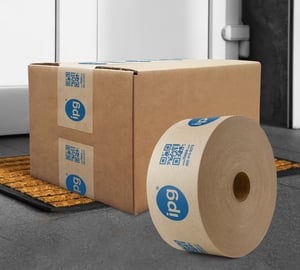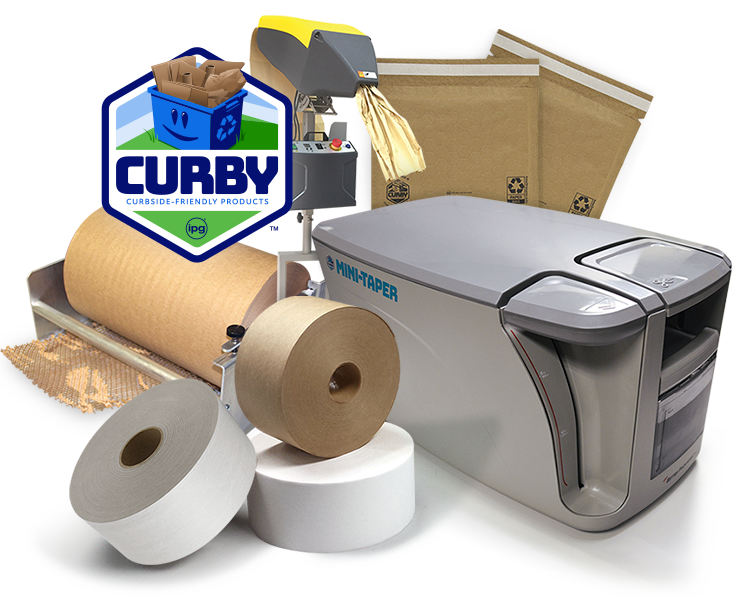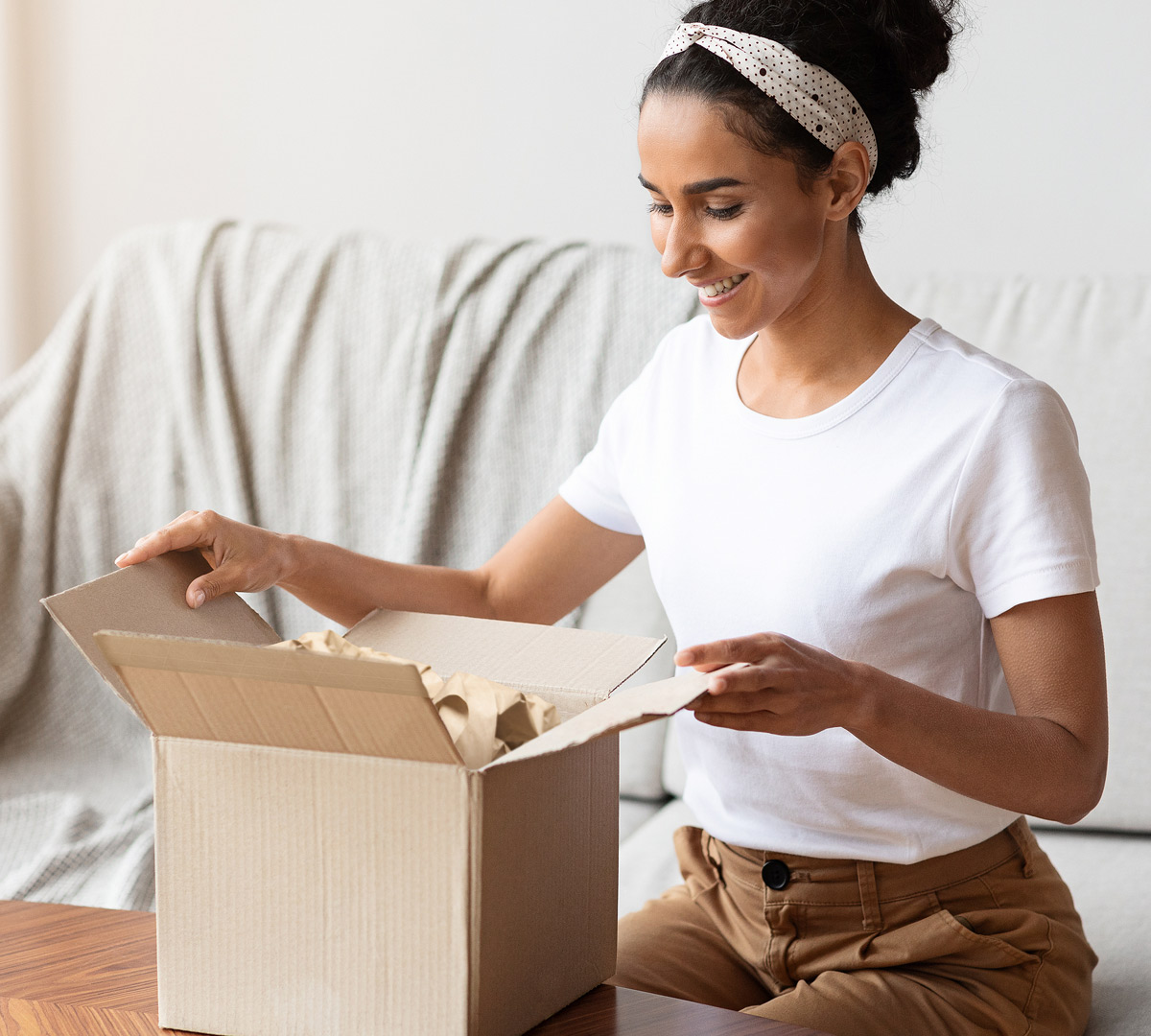IPG PRESENTS:
The Experts' Guide to Sustainable Packaging
Sustainability is the top concern across the packaging value chain, with more boxes, plastic and foam being delivered to doorsteps than ever before. Excess packaging has become a frustration for consumers, who inherit the responsibility of proper disposal, and retailers, who must take on costs and public culpability for adding to waste streams. Packaging sustainably has therefore become both an important means of addressing customer satisfaction and values, while also remaining a means of showcasing innovative solutions that cast retailers as responsible and forward-looking.
But in shifting from ambition to execution, many companies face hurdles in translating their green efforts to consumers. Brands from all sectors and price-points vie for the best eco-credentials, and while consumers have been a significant and a central character in the development of green marketing, there is still an obvious learning curve for consumers to understand and identify the different sustainability measurements that companies work so hard to tout.
Moreover, it appears that customers aren’t always able to determine if a product or brand is truly eco-friendly and sustainable, which means marketers need to do more in order to differentiate and educate.
Packaging has the power to influence consumer behavior and brand image at the very beginning of their product experience. How consumer goods are presented not only tells customers about the product itself, but it also tells them about the value and care companies commit to their goods and those who receive them.
What is Sustainable Packaging?
The emphasis of sustainable packaging is recovering packaging materials through workable, closed-loop solutions in a circular economy. The materials used in packaging should ideally be ”safe and circular”, I.e. non-toxic and designed for the circular economy and they should be produced using renewable energy sources from extraction to recycling. Reducing, reusing, and recycling should be the final stage of a product’s lifecycle. These elements assist brands, producers, and industries in minimizing their environmental impacts while also fostering supportive consumer reactions.
What is Sustainable Packaging and How Can it Help You?
The Evolution of Packaging Design
Packaging design has seen significant changes over the years, with advancements in technology and changing consumer preferences driving the development of new and innovative packaging solutions. While simple materials such as wood, paper, and glass have been used to protect and transport goods for hundreds of years, we began to see early packaging solutions in the 1800s, when the first commercial cardboard box was introduced in 1817 and Water-activated tape being invented in 1912.
As the need for more sophisticated packaging solutions grew and with the rise in industrial manufacturing in a post-war world, new materials such as plastic and metal came to replace re- usable materials. These materials offered greater durability and flexibility, allowing for the creation of more complex and imaginative packaging designs. The advent of the printing press also allowed for the production of high-quality labels and graphics, further enhancing the visual appeal of packaging.
usable materials. These materials offered greater durability and flexibility, allowing for the creation of more complex and imaginative packaging designs. The advent of the printing press also allowed for the production of high-quality labels and graphics, further enhancing the visual appeal of packaging.
With the growth of the consumer market and the rise of global trade, packaging design has become an increasingly important part of the product development process. Today, packaging design plays a crucial role in branding and marketing, with companies using packaging to differentiate their products and create a unique identity in the marketplace.
In recent years, the focus of packaging design has shifted towards sustainability and eco-friendliness. Consumers are looking for packaging that is made from recycled materials and can be easily recycled after use. As a result, many companies are incorporating sustainable practices into their packaging design, using materials that are less harmful to the environment and reducing waste in the packaging process.
Overall, the evolution of packaging design has been shaped by a combination of technological advancements, changing consumer preferences, and a growing emphasis on sustainability. As packaging continues to evolve, it will play an even more important role in branding and marketing, and in protecting and transporting goods around the world
Sustainable Packaging:
Does it Matter?
Sustainable packaging is important because it helps reduce the negative impact of packaging materials on the environment. This includes reducing waste, conserving natural resources, and minimizing pollution. Using sustainable packaging materials can also help reduce the carbon footprint of products, making them more environmentally friendly and helping to address climate change. In addition, sustainable packaging can support local communities and economies by promoting the use of environmentally friendly packaging materials that are sourced and produced locally.
Packaging accounts for a large amount of waste produced globally each year. Taking steps to replace materials with sustainable alternatives will help to reduce the strain on our planet.
During the purchasing process, consumers are presented with many different product options, using packaging with different environmental effects. After use of the packaging, a consumer is faced with the important role of sorting packaging waste for processing. The better packaging waste is sorted, the easier it is to recycle it. Consumers evaluate products and packaging as positive when it contains elements that communicate sustainability, eco-friendliness and fair business practices.
Download our eBook!
Our experts guide to choosing sustainable packaging for your business is a great eBook to have on hand to help answer common questions from your team and overcome objections when making a purchasing decision.
Terms to Know
At Intertape Polymer Group (“IPG”), we offer a variety of packaging options and understand that your knowledge of the process is the first step in deciding what type of packaging materials will best serve your brand.
Accreditation
Accreditation in the packaging industry refers to third-party reviews and assessments of a company’s ability to meet industry standards and applicable certifications.
Attribute
An attribute is a characteristic or element of packaging products that determine how much the product will impact either the environment or human health. Things like:
- Biodegradability
- Recyclability
- Water and energy efficiency
- Indoor air emissions
- Toxicity
Biodegradable
A biodegradable product or material is something that bacteria or other living organisms can decompose.
Carbon Footprint:
A carbon footprint is the amount of carbon dioxide and other carbon compounds emitted when a person, group, or process consumes fossil fuels.
Circular Economy
A circular economy’s goal is to engineer waste out of manufacturing systems, so finite resource consumption is reduced. The circular economy’s linchpin is a full transition to renewable resources.
Closed-Loop Production
In a closed-loop production system, industrial output or by-products are recycled into another product.
Cradle-to-Cradle Manufacturing
In cradle-to-cradle manufacturing, the entire industrial process is designed to be waste-free.
Ecolabel
An ecolabel shows that a product, service, or business meets a set of specific, ecologically-friendly standards.
Life Cycle Assessment (LCA)
LCA is a method for assessing the environmental impact at every stage of a product’s lifecycle. An LCA will measure how much water, raw materials, and energy are used to manufacture, repair, use, distribute, maintain, and dispose of or recycle a product.
Product Stewardship
In product stewardship, those in the product life cycle, such as manufacturers, disposers, users, and retailers, are called to share responsibility for reducing the environmental impact of the products they make, sell, or use.
Recycling
Recycling is the process of converting waste material into a new, reusable item.
Remanufacturing
A form of product recovery that includes rebuilding, repairing, or restoring the parts of old machines to match current consumer expectations of new machinery
Responsibly Sourced Materials
These are raw materials sourced from environmentally responsible suppliers certified through the ASI or FSCO.
Reusable
Packaging that can be refilled or otherwise used again for its original purpose.
Single-Use Products
These are materials, usually plastics manufactured with fossil fuels, meant to be used once and then discarded. In some instances, these products are disposed of within minutes of use.
Supply Chain Management
Where the procurement, operations, and logistics of raw materials acquisition and customer satisfaction meet.
Sustainable Manufacturing
Sometimes referred to as sustainable design or green design, sustainable manufacturing is the process of manufacturing products that has minimal impact on the environment.
Zero Waste
This refers to a system-wide approach to minimize waste and consumption while maximizing recyclability. Products are designed to be reused, recycled, or repaired instead of wasted as a single-use material.

Shifting to a Circular Economy
The majority of packaging today still follows a linear take-make-waste or otherwise known as a cradle-to-grave pathway. The packaging of a product is made from raw materials, the product is utilized, and the packaging is discarded. But a circular economy removes unnecessary packing, guaranteeing that the material is able to be reused instead of dumping it. This is made feasible through creative and innovative packaging design that is safe for reuse, recycling, or composting. The technological and biological materials move continually through the circular economy packaging model’s value circle.
How Does Sustainable Packaging Benefit the Circular Economy?
Disadvantages of a Linear Economy
The majority of packaging today still follows a linear take-make-waste or otherwise known as a cradle-to-grave pathway. The packaging of a product is made from raw materials, the product is utilized, and the packaging is discarded. But a circular economy removes unnecessary packing, guaranteeing that the material is able to be reused instead of dumping it. This is made feasible through creative and innovative packaging design that is safe for reuse, recycling, or composting. The technological and biological materials move continually through the circular economy packaging model’s value circle.

Sustainable Packaging Alternatives
There are many alternatives to traditional packaging materials, and each comes with a unique set of attributes. The best packaging is no packaging at all. However, this is an unrealistic standard to meet, especially with current consumer spending and the need to safely transport items from retailer to consumer. The most sustainable packaging is that which makes the most efficient, and effective, use of resources and is easy to reuse, compost, or recycle.
Examples of Sustainable Packaging
Using recycled materials can help conserve natural resources while reducing the amount of waste that ends up in landfills. It is an opportunity to give a second life to materials already in circulation. At IPG, our ongoing sustainability efforts are a top priority. Our brand is committed to developing sustainable packaging alternatives that meet the changing needs of the market, as well as customers who consider the environment in their decision making.
IPG’s Water-Activated Tape seals cartons using recyclable materials. Water-activated tape is renewably sourced and permanently bonds to corrugated cartons without being affected by extreme hot or cold temperatures.
IPG’s Fragile Wrap is an innovative recyclable honeycomb cushioning solution that offers better protection and pack time efficiencies.
IPG’s PaperSpace Systems reduces material usage and speeds up pack time. Void fill and cushioning produced by PaperSpace Paper Systems are 100% curbside recyclable.
IPG’s Curby Mini-Taper requires only one strip of Water-Activated tape for a secure, strong seal. Cradle-to-Cradle Certified® Silver, Water-Activated tape is recyclable and repulpable.
IPG’s Curby Mailer is a padded mailer made of recyclable paper and lined with a honeycomb padding, keeping products safe and secure during shipping.
Cradle to Cradle Certified® provides brands with the framework for considering the impact of their actions on the environment and the communities across their value chain.
How to Find Sustainable Packaging Manufacturer
Over the past few years, consumer demand for sustainable packaging has increased, forcing companies to re-evaluate their packaging materials and opt for more eco-friendly solutions. There are many factors to consider when choosing a manufacture, such as innovation in design, production processes, and how packaging can be repurposed.
Effective sustainable packaging should meet the functional needs, while also staying in line with the brand. When choosing a packaging manufacturer, consider if the supplier provides the right packaging based on size, weight, design, reusability, durability, protection, safety, and cost. Not only should eco-friendly packaging solutions help meet a brand’s sustainability goals, it should also functionally work with its products as well.
It is also important to keep transparency and accountability in mind when looking at different manufactures. IPG, for example, tracks company progress and commitments made towards sustainable action in its annual sustainability report, and remains accountable in material sourcing through the Cradle to Cradle Certified® Products Program. Looking for responsibly sourced materials and a sustainable manufacturing process is key in choosing a sustainable packaging manufacture.

More brands are turning to sustainable packaging to promote corporate social responsibility, reduce their carbon footprint, limit single-use packaging, or increase sales among eco-conscious customers. Choosing sustainable packaging allows companies the opportunity to be a leader in their industry, as more consumers demand that brands adopt greener practices in supply chains.
Choosing sustainable packaging doesn’t need to be complicated. IPG makes finding sustainable packaging solutions easy, with dozens of products made for all packaging needs. The consumer-focused Curby®- Curbside Recyclable line, for example, includes products ideal for both small and large sellers alike, and are 100% curbside recyclable friendly. Curby products solve some of e-commerce’s biggest growth challenges, while promoting a circular economy and making it as easy as possible for consumers to recycle packaging right from their homes.
Whether a new company or one that’s been around for years, making the switch to sustainable packaging doesn’t happen overnight. It is important to look at sustainable packaging solutions as an investment for the brand. By increasing corporate social responsibility, reducing waste, and promoting a circular economy, sustainable packaging is not only a win for the planet, but a win among the growing number of eco-conscious consumers as well.
IPG is on a mission to continuously improve its approach to sustainable packaging and innovation. We keep both the planet and people in mind when producing alternative packaging solutions, while constantly evaluating our own company footprint.
Ready to make the switch? IPG is happy to work with you to find the right packaging for your business. Fill out this contact form and we will get in touch shortly.
Together, we can make small changes that create a big impact on the climate.

